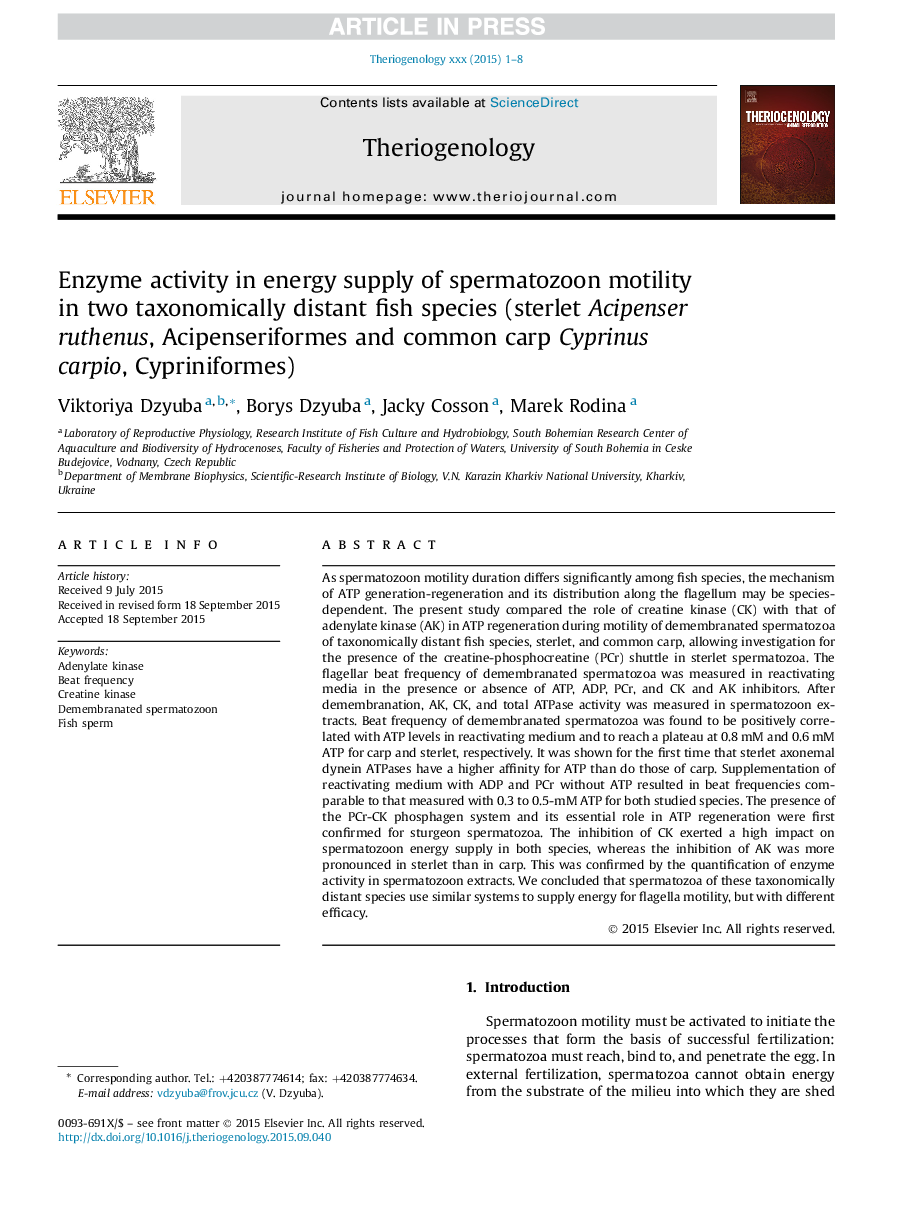| Article ID | Journal | Published Year | Pages | File Type |
|---|---|---|---|---|
| 10891698 | Theriogenology | 2016 | 8 Pages |
Abstract
As spermatozoon motility duration differs significantly among fish species, the mechanism of ATP generation-regeneration and its distribution along the flagellum may be species-dependent. The present study compared the role of creatine kinase (CK) with that of adenylate kinase (AK) in ATP regeneration during motility of demembranated spermatozoa of taxonomically distant fish species, sterlet, and common carp, allowing investigation for the presence of the creatine-phosphocreatine (PCr) shuttle in sterlet spermatozoa. The flagellar beat frequency of demembranated spermatozoa was measured in reactivating media in the presence or absence of ATP, ADP, PCr, and CK and AK inhibitors. After demembranation, AK, CK, and total ATPase activity was measured in spermatozoon extracts. Beat frequency of demembranated spermatozoa was found to be positively correlated with ATP levels in reactivating medium and to reach a plateau at 0.8Â mM and 0.6Â mM ATP for carp and sterlet, respectively. It was shown for the first time that sterlet axonemal dynein ATPases have a higher affinity for ATP than do those of carp. Supplementation of reactivating medium with ADP and PCr without ATP resulted in beat frequencies comparable to that measured with 0.3 to 0.5-mM ATP for both studied species. The presence of the PCr-CK phosphagen system and its essential role in ATP regeneration were first confirmed for sturgeon spermatozoa. The inhibition of CK exerted a high impact on spermatozoon energy supply in both species, whereas the inhibition of AK was more pronounced in sterlet than in carp. This was confirmed by the quantification of enzyme activity in spermatozoon extracts. We concluded that spermatozoa of these taxonomically distant species use similar systems to supply energy for flagella motility, but with different efficacy.
Related Topics
Life Sciences
Agricultural and Biological Sciences
Animal Science and Zoology
Authors
Viktoriya Dzyuba, Borys Dzyuba, Jacky Cosson, Marek Rodina,
